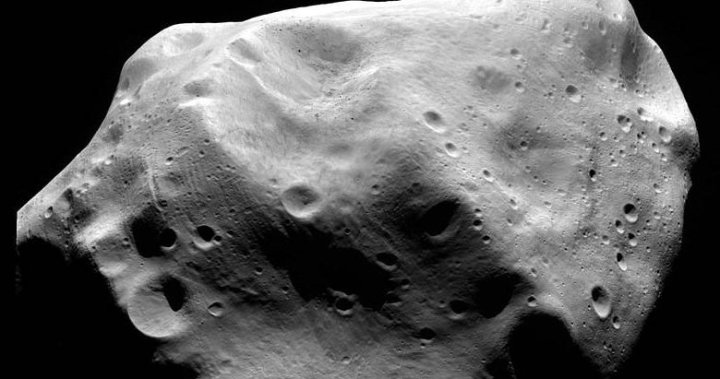A car-sized asteroid just sailed past Earth at extremely close range and NASA didn’t spot it until after it had passed.
Oops.
“The asteroid approached undetected from the direction of the sun,” said Paul Chodas, the director of NASA’s Center for Near Earth Object Studies, according to Business Insider. “We didn’t see it coming.”
The rock itself was about 3 metres to 6 metres (10-20 feet) across, making it roughly the size of a large car or SUV, NASA says. It was travelling at about 12.3 kilometres per second, which is faster than a speeding bullet but relatively slow for a space rock.
The asteroid would have turned into a fireball if it had come down to Earth, NASA says. However, it wasn’t large enough to cause major damage.
The space rock came within about 2,950 km of our planet, according to NASA measurements taken after the fact. That’s slightly closer than the distance from Vancouver to Toronto, and well within the orbit of the moon, which is about 384,000 km away.
The object, dubbed asteroid 2020 GQ, passed over the Indian Ocean early Saturday or late Sunday, and was later spotted as it passed out of Earth’s range.
NASA says it was the closest known asteroid to ever fly by the Earth without hitting it.
It’s not the first time a space rock has come out of humanity’s blind spot.
Astronomers revealed last year that a potential “city-killer” asteroid had missed the Earth by about 73,000 km, after sneaking up on the planet from the direction of the sun. That asteroid was roughly 100 metres wide and travelled at about 24 km/s — twice as fast as the one that missed Earth on Sunday.
NASA described the latest near-miss space rock as “tiny,” adding that it likely would have burned up as a fireball in the Earth’s atmosphere, “which happens several times a year.”
The space agency pointed out that hundreds of millions of asteroids like this one pass Earth each year, although they typically hurtle past beyond the range of the moon. Only a few ever streak by at close range, and asteroid 2020 QG is the closest ever to whip past and survive.

he circled streak in the center of this image is asteroid 2020 QG, which came closer to Earth than any other non-impacting asteroid on record.
ZTF/Caltech Optical Observatories
“It’s really cool to see a small asteroid come by this close, because we can see the Earth’s gravity dramatically bend its trajectory,” Chodas said in a NASA news release. “Our calculations show that this asteroid got turned by 45 degrees or so as it swung by our planet.”
He added that asteroids of this size are typically only visible a few days before or after a close approach to the Earth.
The asteroid that blew up in a massive fireball over Chelyabinsk, Russia in 2013 was 17-20 metres wide, or about the size of a house. It exploded in the sky with the force of about 440,000 tons of TNT, sending out a sonic boom that shattered windows and injured more than 1,600 people over 320 square kilometres.
The Chelyabinsk meteor looks like a crumb compared to the massive asteroid that killed the dinosaurs some 65 million years ago. The dino-killer was about 16 km across, and it punched a crater in Mexico’s Yucatan Peninsula that is about 150 km wide and 20 km deep.
U.S. Congress funded NASA in 2005 to identify 90 per cent of the large asteroids (more than 140 m wide) that come close to Earth.
The largest potentially world-changing asteroid in the forecast is 1950 DA, a 1.3 km-wide asteroid that could hit Earth in 2880.

NASA does not expect any giant asteroid impacts over the next century — but who knows what other nasty surprises the sun might be hiding?
© 2020 Global News, a division of Corus Entertainment Inc.

Web guru. Amateur thinker. Unapologetic problem solver. Zombie expert. Hipster-friendly travel geek. Social mediaholic.






